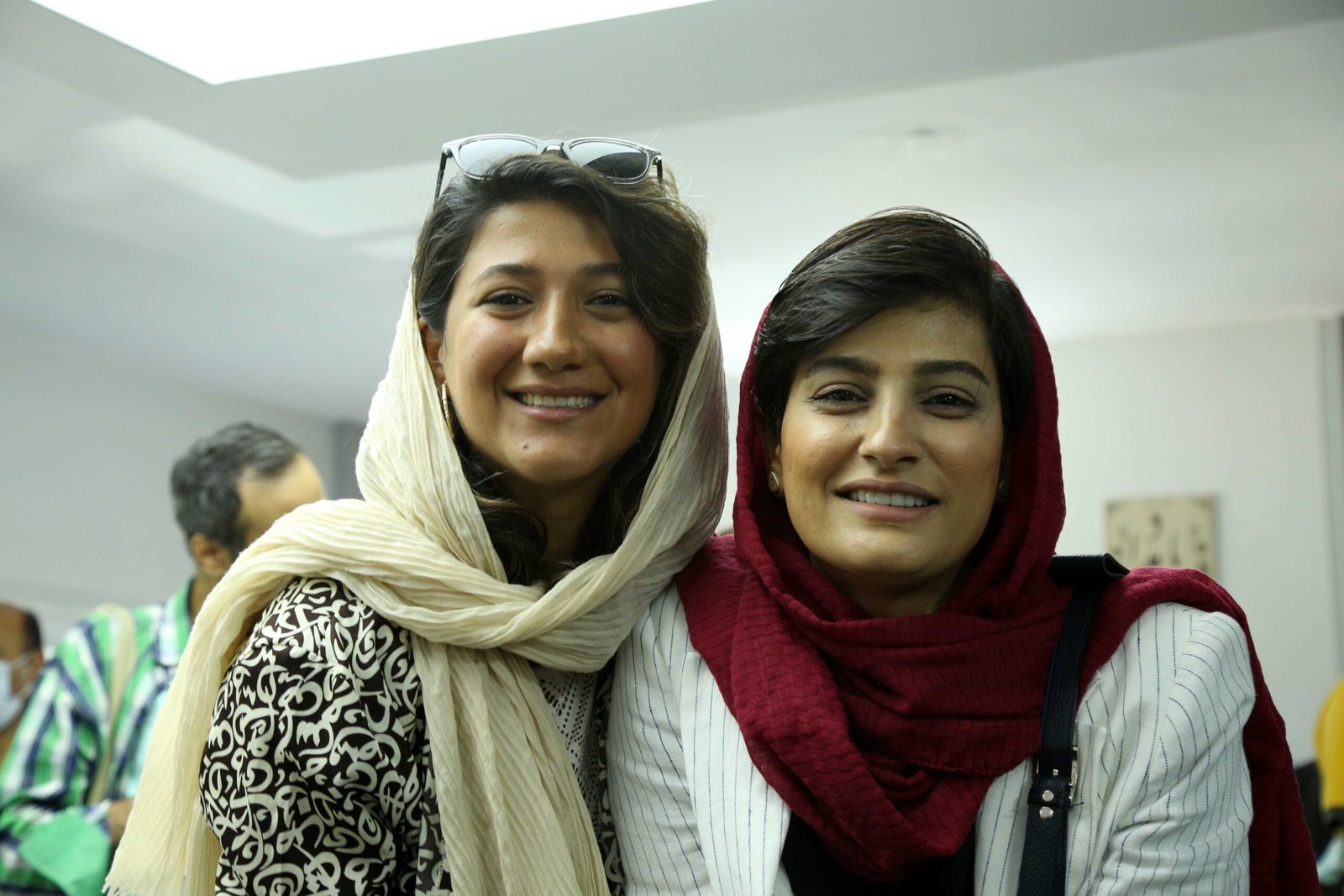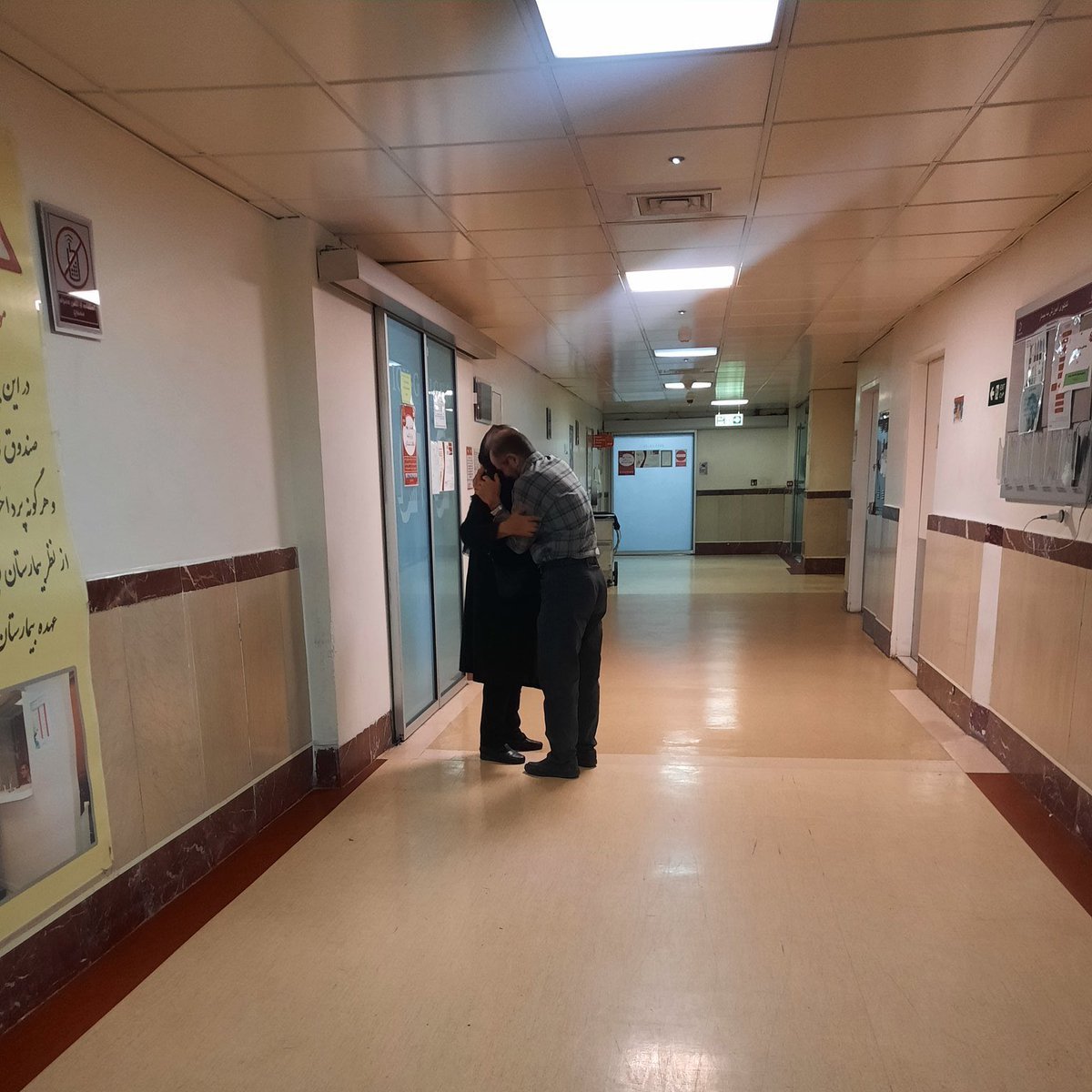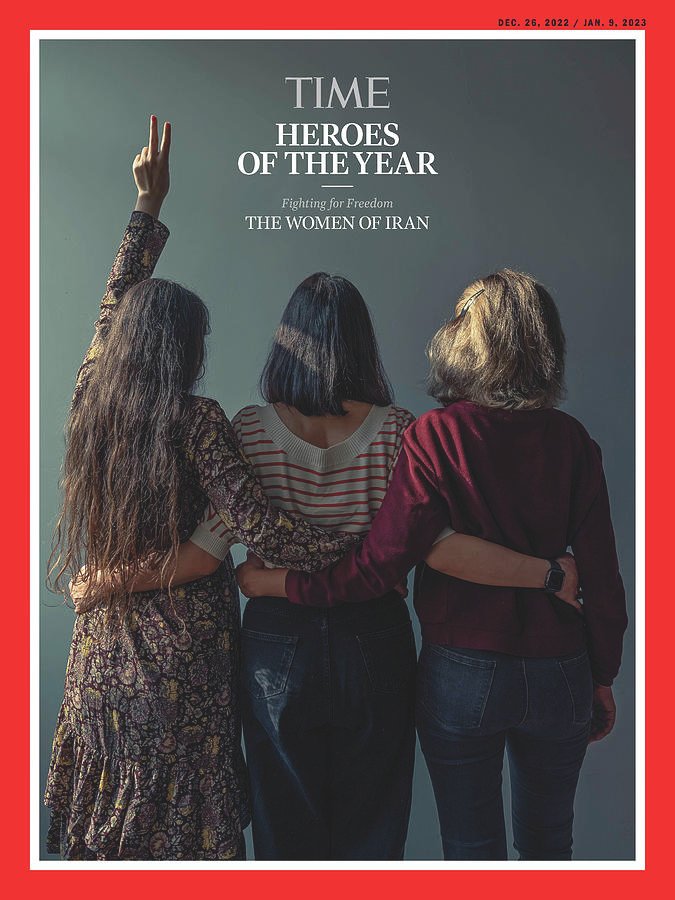A review of Iran’s contemporary history over the past 44 years reveals a narrative defined by brutal repression, gender-based discrimination, and authoritarian rule. This includes the eradication of opposition in the early days of the 1979 revolution, the series of murders during the 1990s (notably the Khavaran massacre), the violent crackdown on university students in 1999, the contested elections of 2009, and the bloodshed during the peaceful economic protests of November 2019 that resulted in over 1,500 deaths in just three days. Additional traumas include the destruction of flight PS752 by missiles from the IRGC, the ban on foreign COVID vaccines during widespread outbreaks, and the persistent economic instability that has pushed many Iranians toward the brink of total collapse in recent years.
In this article, we aim to highlight key moments of the Woman, Life, Freedom Revolution and provide links for further reading. We encourage you to engage with this content. By raising awareness and amplifying these voices, you can contribute more than you realize. Many individuals at risk of execution have had their lives saved through international awareness and pressure. (Learn more about how you can support the Woman, Life, Freedom Revolution here.)
Say Her Name: Mahsa Amini
Mahsa Amini was arrested 1. On September 13, 2022, 22-year-old Mahsa Jina Amini was apprehended by the “morality police” in Tehran while visiting from her hometown in the Kurdistan region of western Iran. She was accused of violating the Islamic Republic’s strict dress code for women, which includes the mandatory hijab.
Niloufar Hamedi reports the incident 2. Niloufar Hamedi, an Iranian journalist, was the first to report Mahsa’s arrest after she fell into a coma. She shared a photo of Mahsa’s parents at the hospital, which quickly went viral. A week later, Niloufar was arrested alongside her colleague, Elaheh Mohammadi, and taken to the notorious Evin Prison, where they faced interrogation and were placed in solitary confinement.

In February 2023, they were awarded the International Press Freedom Award by Canadian Journalists for Free Expression (CJFE) in absentia, presented by Margaret Atwood. By March 2023, they had received several prestigious international journalism awards. As of now, both remain imprisoned without clear charges or legal representation.

Mahsa passed away 3. On September 16, Mahsa Amini died after being in a coma for three days. Although authorities denied any involvement in her death, her father discovered bruises on her head and legs and held the police accountable. Subsequent footage and evidence confirmed that her death was caused by police brutality, thus marking the official beginning of the Woman, Life, Freedom movement.
#MahsaAmini 4. Protests erupted the day after Mahsa’s death in her hometown in Kurdistan, quickly spreading to over 80 cities nationwide. Social media became a powerful tool for mobilization as Iranian women expressed their solidarity by burning their hijabs and cutting their hair.
Protests began in Sanandaj 5. Protests erupted in Sanandaj, a city in Kurdistan, where videos circulated on social media showing women demonstrating without hijabs to protest Mahsa Amini’s brutal killing.
Internet Shutdown 6. Nine days into the protests, the authorities shut down mobile data services and restricted access to Instagram and WhatsApp to hinder communication among protesters and prevent the dissemination of evidence and images depicting governmental abuses.
(Hadis Najafi) 7. On September 25, Hadis Najafi, a 20-year-old protester in Karaj, was shot six times by security forces and killed. She was merely one of many known and unknown casualties among the protesters.
It’s not just a protest anymore.
Call it the “Woman, Life, Freedom” revolution.
(Strikes) 8. On September 26, nationwide protests commenced as university students and teachers went on strike, demanding an end to the Islamic Republic. Concurrently, significant strikes began in Iran’s oil and gas sectors and key industries. Many workers and labor activists were arrested, with several still imprisoned.
(Baraye, Shervin Hajipour) 9. On the 16th day of the revolution, young musician Shervin Hajipour released his song “Baraye” (meaning “for”) on Instagram. The song, inspired by protesters’ tweets, quickly went viral and became the anthem of the Woman, Life, Freedom movement. The following day, Shervin was arrested, and the video was removed from his social media.
The video garnered over 40 million views, and Shervin later won the Grammy Award for “Best Song for Social Change” in 2023.
International Protests 10. Protests worldwide, organized by Hamed Esmaeilion, who lost his wife and daughter in the downing of Ukrainian Flight PS752 (Read More), showcased solidarity with the Woman, Life, Freedom movement. The protest in Richmond Hill, Ontario, became the largest demonstration in Canadian history, with over 50,000 attendees according to local police. Similarly, in Los Angeles, home to a significant Iranian community, over 70,000 people marched against the Islamic Republic.
Sharif University 11. On October 2, protests erupted at Sharif University, leading to violent clashes between students and Basijis (informal Islamic government agents). Many students were arrested, beaten, and expelled from their studies.
Students 12. On the 21st day of the revolution, student protesters emerged in numerous cities across the nation. Videos showed students demanding an end to the prolonged dictatorship of the Mullahs. Security forces arrested schoolgirls (some as young as 16 or even younger) participating in the protests and searched their phones for evidence of their involvement.
Nika and Sarina 13. In early October, tragic news broke regarding the deaths of two young protesters: Nika Shakarami and Sarina Esmailzadeh. Seventeen-year-old Nika disappeared after attending a protest on September 20. Her family eventually found her in a morgue a week later. An Amnesty International report stated that Nika was brutally beaten to death, though Iranian authorities claimed she committed suicide by jumping from a rooftop. Video footage of her fleeing from police in a dark alley was later released. Sixteen-year-old Sarina, a schoolgirl and blogger, was shot multiple times by Basiji forces.
Sexual Assaults 14. On October 13, a video surfaced showing security forces physically assaulting a young female protester. Subsequently, numerous reports emerged from prisons detailing rampant sexual assaults on both male and female detainees as a method of punishment. Some female prisoners have reportedly taken their own lives due to these horrific conditions.
Chants and Arts 15. Throughout the Woman, Life, Freedom revolution, numerous artists—graphic designers, musicians, and anonymous performers—have created impactful art. Many observers describe this as the most poetic and artistic revolution in history due to its unique nature as the first women-led revolution globally.
Evin 16. On day 33, the infamous Evin Prison in Tehran—housing hundreds of political prisoners, including journalists, activists, and students—was set ablaze. Reports confirm at least four deaths and 61 injuries, though details remain sparse.
Elnaz Rekabi 17. Elnaz, a 33-year-old Iranian rock climber, competed in the IFSC Asian Championship in South Korea without her mandatory headscarf, marking a significant departure from post-1979 norms. Upon her return to Tehran, she was greeted by hundreds of Iranians as a show of support for her bravery. However, she was later arrested and coerced into making a false confession on national television.
Khodanoor 18. Khodanoor Lajaei, a 27-year-old from Sistan and Baluchistan—one of Iran’s most impoverished provinces—witnessed the “Bloody Friday” protests in Zahedan on October 1, where government forces opened fire on worshippers. Khodanoor was shot and left to bleed to death while chained. Videos and images captured his joyful spirit and love for life; his mother keeps his memory alive by sharing his story.
Ghazakeh Chalavi 19. “Don’t be afraid, we are all together,” were the final words of Ghazaleh, a 33-year-old woman fatally shot during a demonstration in Amol. She captured the last moments of her life on camera.
Berlin 20. Over 80,000 protesters gathered in Berlin from various parts of the world to demonstrate in support of the Woman, Life, Freedom revolution in Iran.
Mahsa’s 40th day memorial 21. Forty days after Mahsa Amini’s death, tens of thousands of Iranians marched against the regime across the country. Photos on social media displayed long lines of cars and people traveling to Saqez, Mahsa’s hometown and final resting place.
Armita Abbasi 22. Twenty-one-year-old Armita Abbasi went missing on October 18 after receiving treatment for internal injuries allegedly resulting from sexual assault and torture during her detention.
Koomar and Hannaneh 23. Hannaneh Kia, 23 years old, was shot while returning home from a dental appointment in Nowshahr, Mazandaran. Sixteen-year-old Koomar Daroftadeh was also killed by security forces on October 30 in Piranshahr.
Zahedan 24. The 53rd day of the revolution marked the 40th memorial for “Bloody Friday” in Zahedan, when security forces fired upon thousands of worshippers. Casualties included both injuries and deaths among the protesters. Since many Baluchi individuals lack identification due to oppressive government practices, the death toll remains unfortunately unreported.
Kian 25. Nine-year-old Kian Pirfalak was shot dead in Izeh while traveling in the car with his family. His death further ignited protests. His father was severely injured and fell into a coma, while Kian’s mother concealed her son’s body at home to protect it from security forces, even borrowing ice cubes from neighbors to preserve it. Numerous incidents of security forces seizing corpses to conceal their violent actions have also been reported.
United Nations Committee 26. On November 24, 2022, the United Nations Human Rights Council convened a special session to address human rights concerns in Iran. Twenty-five countries supported an independent fact-finding mission to investigate reported human rights violations.
Toomaj Salehi 27. Toomaj Salehi is an Iranian rapper who used his music as a platform to criticize the regime and call for change. He played a significant role in the Woman, Life, Freedom revolution but was arrested on October 30. He faces grave charges, including “corruption on earth,” punishable by death under Islamic law. He remains in solitary confinement, suffering from injuries sustained during torture.
#TheGirlsofRevolutionStreet 28. In the winter of 2017, Vida Movahed, a young woman, stood atop a utility box on Revolution Street in central Tehran, waving her white headscarf on a stick. Her act of defiance led to her arrest and torture. Subsequent to her protest, many Iranian women followed suit. From her initial act to the ongoing Woman, Life, Freedom revolution, numerous women have risked their lives, faced arrest, or even lost their lives for the sake of freedom. On December 7, 2022, Time magazine honored these courageous women by featuring them on the cover as “Heroes of the Year.”

Political Alliance 29. On January 1, 2023, notable opposition figures announced their unity and organization, expressing shared messages of solidarity and hope for freedom and justice in the year ahead. This group includes activists Nazanin Bonyadi, Massih Alinejad, Hamed Esmaeilion, soccer player Ali Karimi, and former crown prince of Iran Reza Pahlavi.
Executions 30. On January 7, 2023, Seyed Mohammad Hosseini and Mohammad Mehdi Karami were executed after rapid trials that excluded legal representation. Such brief trials, often lasting no more than ten minutes, are designed to instill fear in the public. These two young men were not the first to face execution during the ongoing revolution. On December 8, 2022, 23-year-old Mohsen Shekari was executed, followed by 23-year-old Majid Reza Rahnavard, who was publicly hanged from a crane in Mashhad on December 12. Simultaneously, numerous mass executions occurred in Sistan and Baluchistan, as well as Kurdistan, often without any identification being released.
The Woman, Life, Freedom Revolution is ongoing…
Book Your Stay at Hi Tehran Hostel Now
HI Tehran Hostel offers budget-friendly accommodations in a prime location of Tehran. Dorms starting at 10 Euros and private rooms from 25 Euros with 24/7 reception service. You Are Invited!



